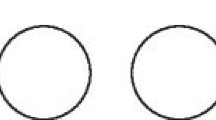Abstract
NEWMAN1 has proposed that the analgesia produced by passing a small electric current from the dental drill (positive) to a hand electrode (negative) is due to anodal blocking of nerve fibres within the tooth. Fields et al.2 feel that the likely mechanism is electrocoagulation of odontoblasts in the dentinal tubules under the site of drilling. The difference is clinically important, for anodal blocking is a harmless reversible process whereas the destruction of odontoblasts leaves permanent dead tracts in the dentin under the site of application of the current. These two mechanisms can be separated by applying stimulation and electro-analgesic current to different sites on the same tooth, since the local mechanism (electrocoagulation) would have no effect in blocking a stimulus applied elsewhere.
This is a preview of subscription content, access via your institution
Access options
Subscribe to this journal
Receive 51 print issues and online access
$199.00 per year
only $3.90 per issue
Buy this article
- Purchase on Springer Link
- Instant access to full article PDF
Prices may be subject to local taxes which are calculated during checkout
Similar content being viewed by others
References
Newman, P. P., Nature new Biol., 243, 474 (1973).
Fields, R. W., Savara, B. S., and Tacke, R., Oral Surg., 34, 694 (1972).
Mitchell, C. L., J. Pharmac. exp. Therap., 146, 1 (1964).
Mahan, P. E., and Anderson, K. V., Expl. Neurol., 29, 439 (1970).
Reid, K. H., Soc. Neurosci., second Annual Meeting, Abstract 15.6 (1972).
Lefkowitz, W., Burdick, H. C., and Moore, D. L., J. Prosth. Dent., 13, 940 (1963).
Scott, jun., H. M., J. Dent. Child., 29, 225 (1962).
Douglas, B. L., N.Y. State Dent. J., 21, 28 (1955).
Casey, K. L., and Blick, M., Brain Res., 13, 155 (1969).
Author information
Authors and Affiliations
Rights and permissions
About this article
Cite this article
REID, K. Mechanism of Action of Dental Electro-anaesthesia. Nature 247, 150–151 (1974). https://doi.org/10.1038/247150a0
Received:
Issue Date:
DOI: https://doi.org/10.1038/247150a0
Comments
By submitting a comment you agree to abide by our Terms and Community Guidelines. If you find something abusive or that does not comply with our terms or guidelines please flag it as inappropriate.



